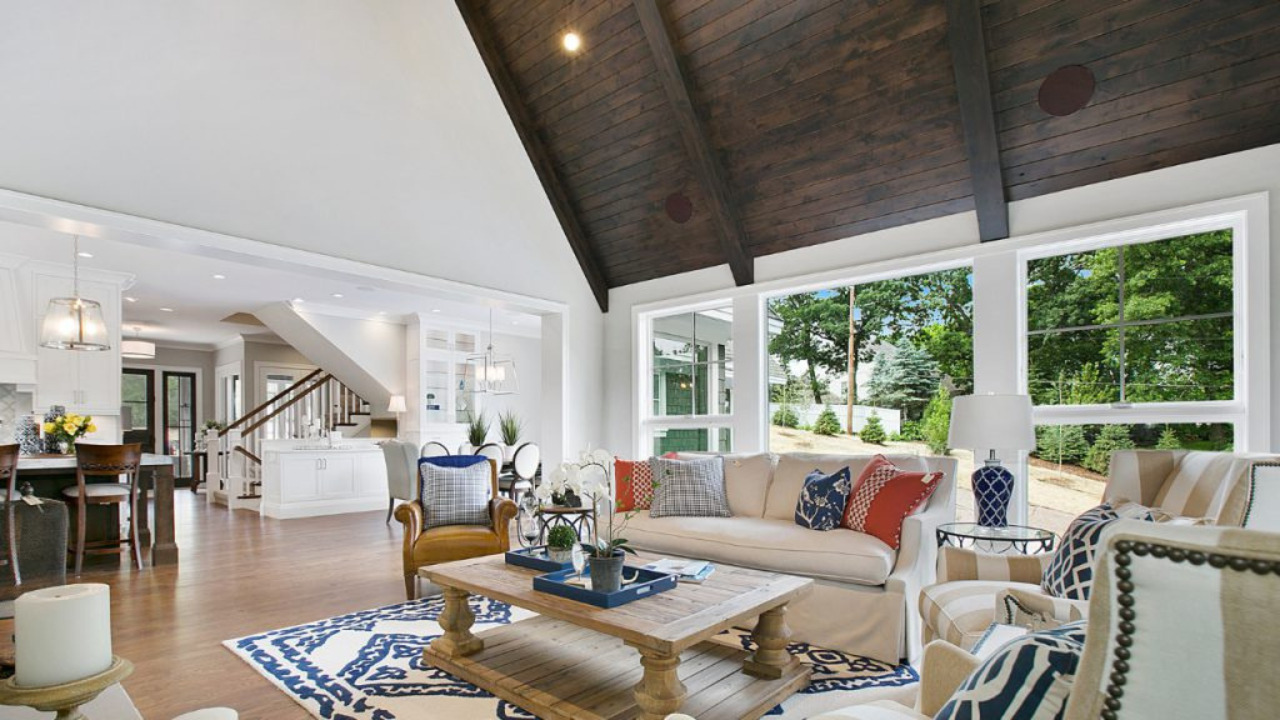Whenever we talk about ancient architectural structures, the vaulted ceiling retains its prominence. Just like other types of ceiling, a vault ceiling is an important constructive element that meets both technical and functional needs. The grandeur and symmetry are exceptional, hence the reason behind their popularity.
A vault is a self-supporting arched structure that extends up from side walls. It creates a space volume in the center that draws the eye upward and makes the room feel spacious and airer.

Table of Contents
History of Vaulted Ceiling
The earliest vaulted ceiling dates back to the Neolithic hamlet in Crete approximately 7000 years ago. Before vaults, columns were used to support the structures. However, there were several drawbacks to using columns such as support to a certain height. These drawbacks resulted in the conception of vaulted ceilings in the Renaissance era.
Since then, we have witnessed the evolution of vaulted ceilings into fan vaults, ribbed vaults, gothic vaults, etc. Vault ceilings have been extensively used in history such as Gothic Cathedrals, Egyptian Pyramids, Rome’s Pantheon etc.
Let’s find out more about this magnificent architectural structure.
What is Vaulted Ceiling

The vaulted ceiling is also known as a cathedral ceiling, raised ceiling, or high ceiling.
A vaulted ceiling is a striking architectural ceiling type characterized by its arched or vaulted shape. The ceiling creates a haunch (that may or may not be ribbed) as it rises upwards in a convex or concave manner. The result is a spacious and less cluttered interior with a touch of elegance. A vaulted ceiling is typically higher than the standard 8′-10′ ceiling height.
Throughout history, the style of vaulted ceilings can be found in many Greek and Roman buildings. From cathedral ceilings to palaces, temples, and modern-day homes, this architectural style has become a powerful trendsetter.
The construction of a vaulted ceiling involves the use of arches, ribs or ceiling beams, and some other structural members that help distribute the ceiling load. The ceiling curvature can also be played with. You can opt for a semicircular arch to more intricate designs or ribbed patterns even.

Vaulted ceilings must not be confused with rafter ceilings. They also feature exposed beams running from the roof summit down to the eaves. The vaulted shape is a prominent factor that distinguishes these ceiling types from others such as popcorn ceiling.
Considering the energy cost of heating or cooling a vaulted ceiling is crucial. Since the inside is airy and capacious, an efficient heating or cooling system is required incurring additional costs.
The large ceiling height also makes maintenance and cleaning a challenge for vaulted ceilings. Therefore specialized equipment was required for cleaning or painting vaulted ceiling.
Purpose of Vaulted Ceilings
Valued ceilings serve a two-fold purpose i.e., aesthetic-cum-functional. Spotlighting the functional perspective, the arches serve as great structural supports to transfer loads of underlying members, providing stability.
Vault ceiling also enhances the natural light especially when there are skylights or other windows. Also, it increases space for floor-t-ceiling windows as well as allows space for large ceiling lights.
Aesthetically, these ceilings provide visual interest and attraction by making the area commodious. Vaulted ceilings can blend well with any interior design adding a wow factor to your space. Vaulted spaces utilize the wasted roof space to create a greater volume.
Besides, vaulted ceilings can also help improve the acoustics of living space. They prevent noise intrusion from outside and reduce echo voices inside the building.
5 Common Types of Vaulted Ceilings
Vaulted ceilings entail variety in their design. Some of the common vaulted ceiling types are as follows:
1) Barrel Vault Ceilings
A barrel vault ceiling resembles an inverted barrel or tunnel and features a continuous semi-circular arch. It is often used in long hallways or passageways.
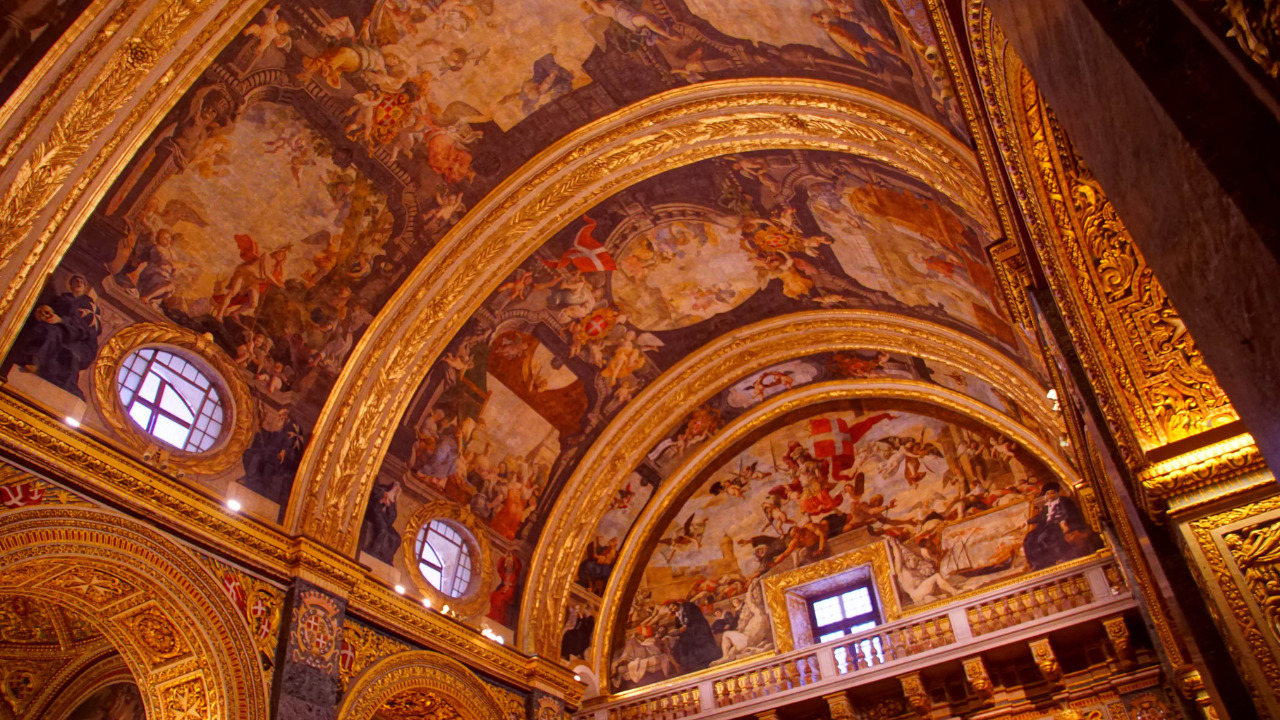
2) Double Barrel Vault Ceilings
A double barrel vault, also known as a groin vault, is created by two barrel vaults intersecting each other. The crossing results in the formation of arched ribs. This ceiling type provides added support and structural integrity along with imparting visual depth to the interior.
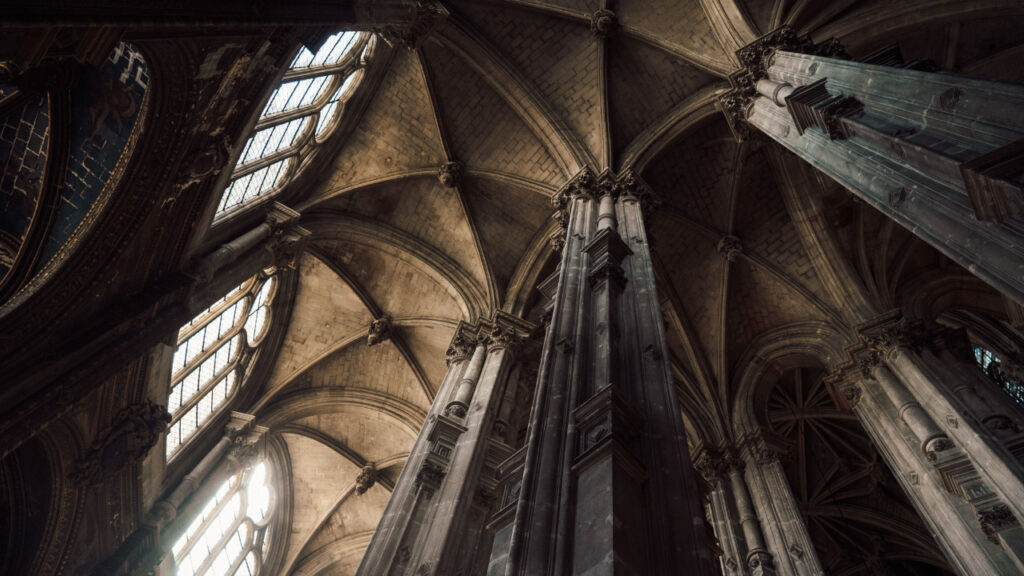
3) Ribbed Vault Ceilings
These ceilings feature decorative ribs spaced at regular intervals to form a network of arches. The intricacy of the ribbed vault ceiling is eye-catching and it creates a profoundly aesthetic living space.
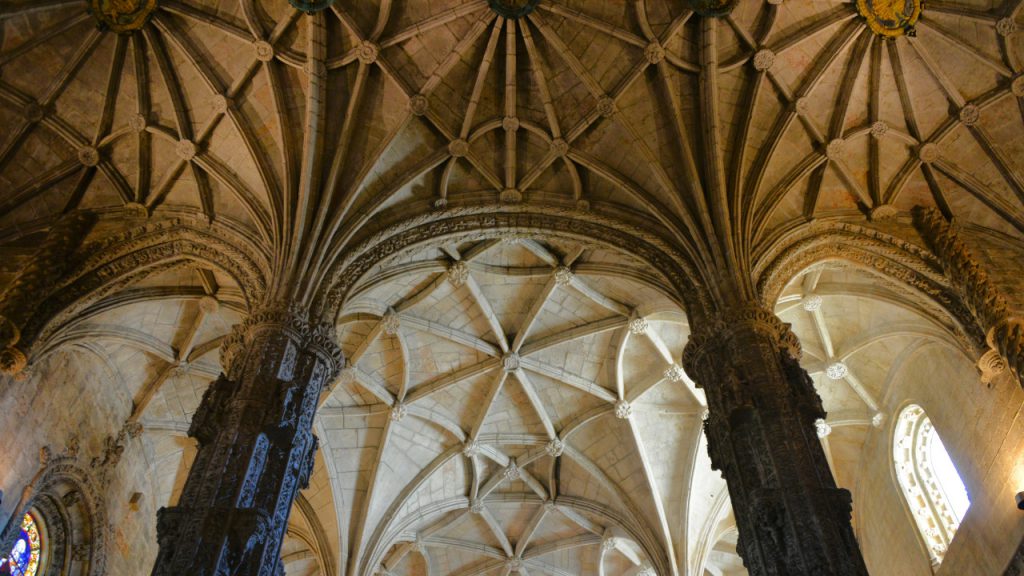
4) Dome Vault Ceiling
It’s also known as a hemispherical vault ceiling featuring a hemispherical or dome-shaped design. This is a standard flat ceiling with a central dome (recessed).
Dome vault ceilings are commonly seen in mosques, churches, temples, or other public buildings. It’s relatively hard to construct and that’s why it isn’t commonly seen nowadays. Overall, dome vault ceilings are quite stunning and can enhance the visual appeal of any space.
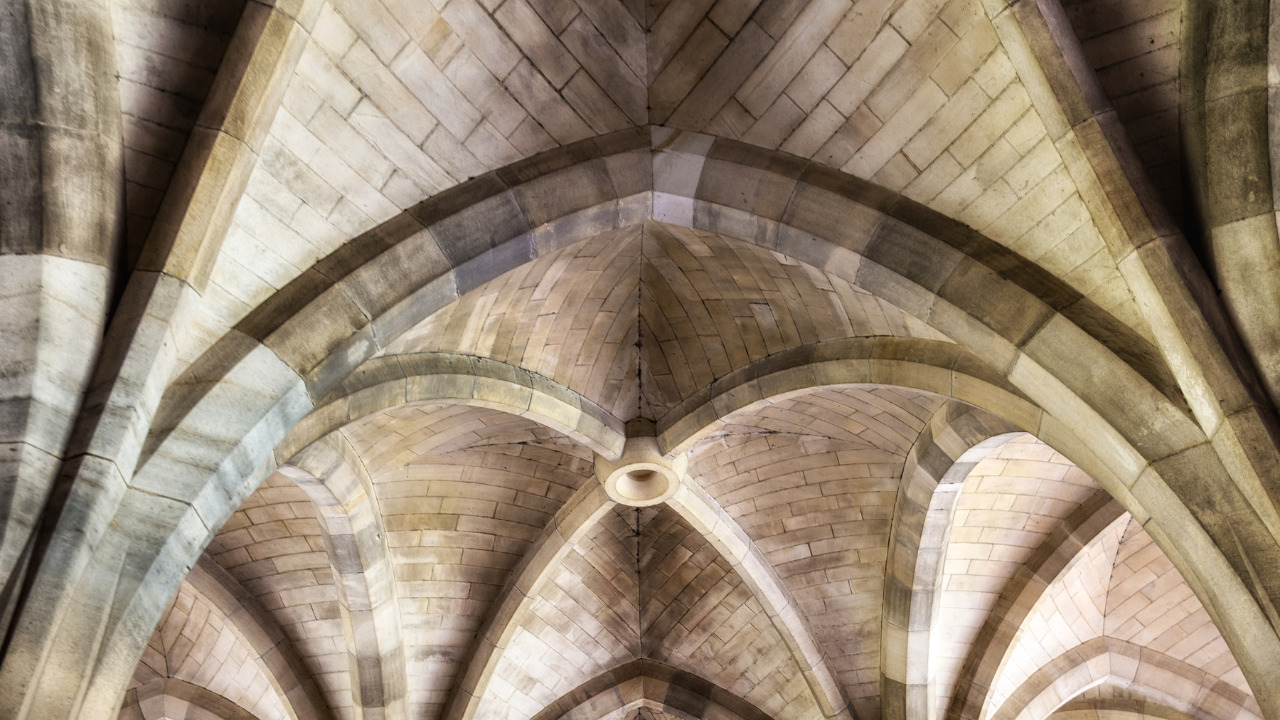
5) Cloister Vault Ceilings
It is also known as the pavilion vault. This type of vaulted ceiling features a fan-like pattern. This is created by ribs radiating from a focal point, forming the shape of a fan.
In other words, four concave surfaces meet at a point above the center of the vault. This is the most expensive type of vault structure as it is difficult to construct. The need for skilled labor increases the construction cost for this type of vault ceiling as well.
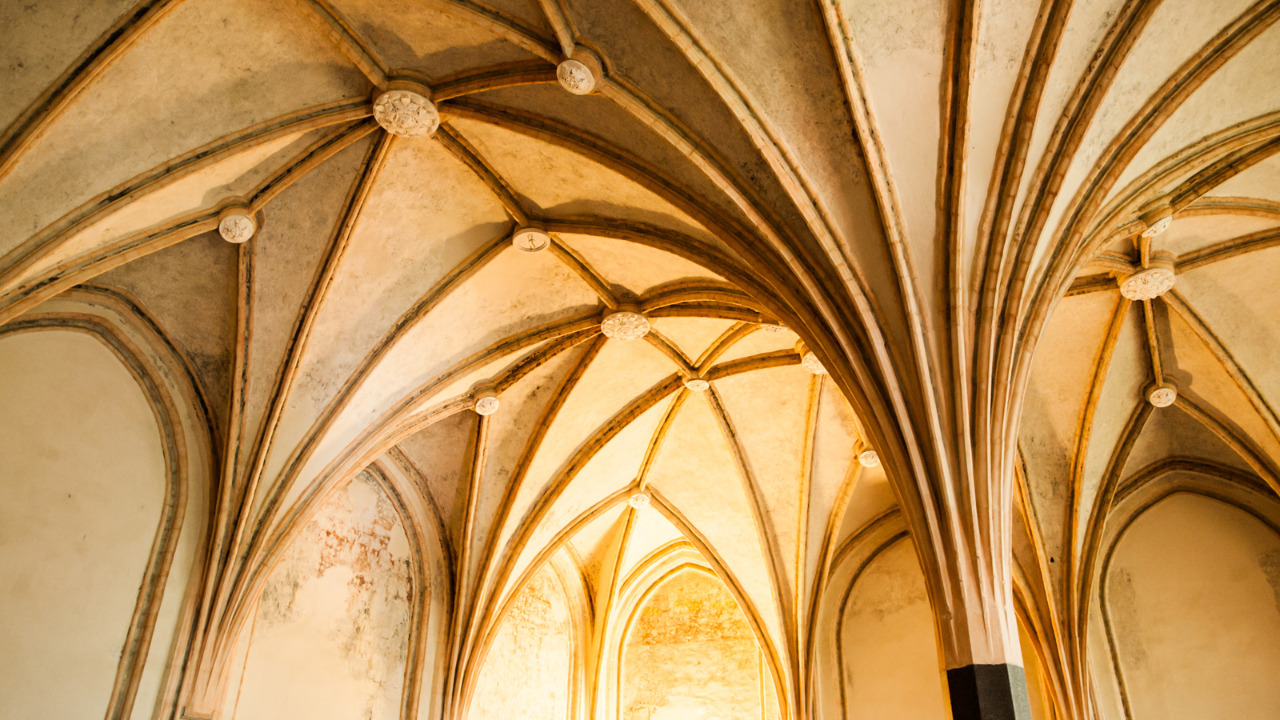
Vaulted Ceilings: Then Vs Now
Old Times
Vaulted ceilings used to be only confined towards religious or monumental structures such as temples, cathedrals, palaces, etc. Intricate designs of vaulted ceilings were common and mostly stone or brick masonry was used. In addition, maintenance of the ceiling was a tad challenging in ancient times because of the difficulty in accessing the overhead surface.
Current Trend
Contemporary vaulted ceilings allow greater design flexibility and can even be found in residential and commercial buildings. Decorative elements can also be incorporated to match the overall ambiance of a room. Within the domain of vaulted ceilings, different architectural styles can be imitated. Moreover, provisions for maintenance access are now provided to make periodic checking easy.
4 Common Advantages of Vaulted Ceilings
The advantages of vaulted ceilings are listed as follows:
Enhance Visual Space
These ceilings provide an augmented sense of spaciousness, creating an airy and ventilated atmosphere within the building. This means that with a vaulted ceiling style, your room or interior will not feel congested or cluttered.
Prominent Appearance
The architectural style of vaulted ceilings exudes elegance and grandeur. The arch or vault will connect you with the ancient styles and this adds visual depth to the interior.
Reduce Reverberations
This ceiling type also helps reduce reverberations within the building, providing improved acoustics.
Compatible with Most Interior Styles
Vaulted ceilings offer design flexibility and versatility. They can be blended with all home interiors and allow homeowners to customize their personal space. You can paint vaulted ceiling to complement the wall accents adding more vibrancy to the interior.
Vaulted Ceiling Installation

Calling in professionals is the first step to begin with. The subsequent steps are enlisted and discussed herewith.
1) Measurement
Vaulted ceilings are detailed and designed considering the space, ceiling shape, and additional interior elements. So, the first step in vaulted ceiling installation is the measurement of space for which you need insulation. Also, assessment for modifications is required to support the vaulted ceiling.
2) Assembling
Assemble the required support structures for the vaulted ceiling, such as arches, beams, ribs, etc.
3) Installation
Install the ceiling panels in place and go for any finishing touches, if required. You may also add indoor lighting fixtures or other decorative elements to your ceilings.
Vaulted Ceiling Cost
A definitive cost value is impossible to predict because a lot of factors influence the total cost of installing vaulted ceilings. These factors include the design complexity or intricacy desired by the homeowner, material choice for the ceiling, labor costs, location of the building, additional finishing work such as paint coats, etc.
In addition, a significant amount of effort is required to modify the existing ceiling structure and go for a vaulted ceiling. This removal work can also incur additional costs. The size of the ceiling surface of the room interior is also didactic when it comes to a cumulative cost chart.
In general, a rough estimate can be somewhere between $15 to $30 per square foot. But the numbers shouldn’t be blindly calculated without inspecting the influencing factors.
Let’s Wrap Up!
The vaulted ceiling is an ancient yet controversial architectural component. From their old-world charm and visual appeal to their ability to blend with most interior design styles, all these factors make them a popular ceiling option.
On the other hand, people consider them quite outdated and high maintenance. But despite this, vault ceilings are a popular choice even in countryside luxury homes architecture.
So if you are one of the homeowners who appreciate the extravagance that vaulted ceilings add to the room, now it’s your time to incorporate them. But whenever you decide upon it, choose an experienced constructor for home improvement services such as ceiling installation, to make sure they are skilled and have sufficient experience in the field.





